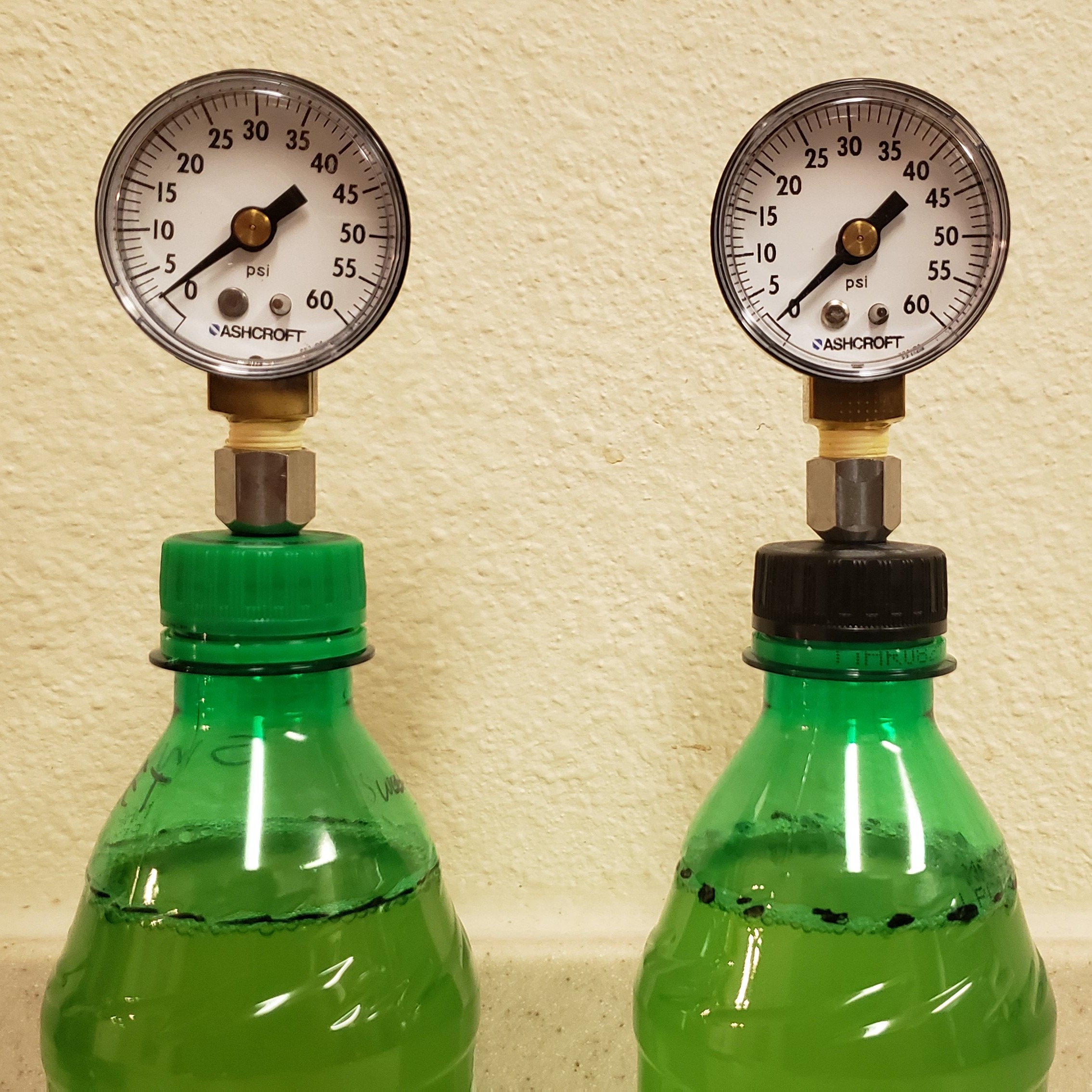Wasn't sure whether this is best in the fermentation, bottling, or cider forums, but I'll take a stab here first since it relates to bottle conditioning. I know some of this question depends on the health of the yeast in question, but for the sake of argument, assuming the yeast populations are as close to identical across vessels as possible for this...
So, picture bottling cider from the same batch into two 12-oz bottles with priming sugar added to each bottle directly. Assuming that there is the same amount of yeast in solution and the same amount of sugar in each bottle (using an ideal case), should the rate of consumption (therefore the rate of carbonation) be the same in both bottles? In other words, will the sugars be completely consumed at close to the same time? (My instinct is yes, with some variation given that these are living organisms, so won't be completely consistent - but the variation in time should be relatively small, all other things being equal)
What if there's the same amount of yeast, but different amounts of sugar - will the yeast consume the sugars at the same rate in each bottle, meaning that when the first bottle's sugars are fully consumed there is still some left in the second bottle? Or, does the presence of more consumable sugar increase the rate of fermentation in bottle 2? (My instinct says that the fermentation speed is specific to the yeast and they shouldn't eat faster just because there's more food, but I'm not sure).
What I'm trying to figure out is whether I can use this process to test the level of back-sweetening I like in my cider by varying the amount of juice I sweeten with before I bottle. I'm planning to let it carb, then pasteurize to keep some sweetness. So what I'm thinking is to dose the bottles with three different amounts of juice (I know the sugar content, so can get a good idea of how much sugar I'm adding), let them condition for the same length of time, then when I pasteurize they should all be similarly carbed, but have different levels of sweetness. Depending on which ones are preferred, I know in the future how much to back sweeten with at the batch level, at least generally speaking.
That really depends on my assumption that the bottles will all have their sugars consumed at roughly the same rate - if that's not the case, then I'll have really different carb levels and no real read on the sweetness. I know that I sometimes get different carb levels in my bottles of beer, but I think I've narrowed that down to poorly mixed priming sugar in the bottling bucket - when I use carb drops, the problem goes away.
So, picture bottling cider from the same batch into two 12-oz bottles with priming sugar added to each bottle directly. Assuming that there is the same amount of yeast in solution and the same amount of sugar in each bottle (using an ideal case), should the rate of consumption (therefore the rate of carbonation) be the same in both bottles? In other words, will the sugars be completely consumed at close to the same time? (My instinct is yes, with some variation given that these are living organisms, so won't be completely consistent - but the variation in time should be relatively small, all other things being equal)
What if there's the same amount of yeast, but different amounts of sugar - will the yeast consume the sugars at the same rate in each bottle, meaning that when the first bottle's sugars are fully consumed there is still some left in the second bottle? Or, does the presence of more consumable sugar increase the rate of fermentation in bottle 2? (My instinct says that the fermentation speed is specific to the yeast and they shouldn't eat faster just because there's more food, but I'm not sure).
What I'm trying to figure out is whether I can use this process to test the level of back-sweetening I like in my cider by varying the amount of juice I sweeten with before I bottle. I'm planning to let it carb, then pasteurize to keep some sweetness. So what I'm thinking is to dose the bottles with three different amounts of juice (I know the sugar content, so can get a good idea of how much sugar I'm adding), let them condition for the same length of time, then when I pasteurize they should all be similarly carbed, but have different levels of sweetness. Depending on which ones are preferred, I know in the future how much to back sweeten with at the batch level, at least generally speaking.
That really depends on my assumption that the bottles will all have their sugars consumed at roughly the same rate - if that's not the case, then I'll have really different carb levels and no real read on the sweetness. I know that I sometimes get different carb levels in my bottles of beer, but I think I've narrowed that down to poorly mixed priming sugar in the bottling bucket - when I use carb drops, the problem goes away.

















![Craft A Brew - Safale BE-256 Yeast - Fermentis - Belgian Ale Dry Yeast - For Belgian & Strong Ales - Ingredients for Home Brewing - Beer Making Supplies - [3 Pack]](https://m.media-amazon.com/images/I/51bcKEwQmWL._SL500_.jpg)























